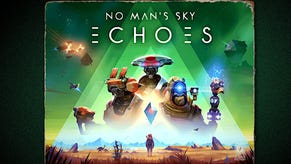No Man's Sky - How to Use Beacons
How to use beacons in No Man's Sky, including how to find them.
Finding and interacting with beacons is a vital part of the No Man's Sky experience, but getting down the basics of approaching and using them can be a bit intimidating. Here's how to use the beacons you stumble across in the game.
What are beacons?
Beacons are cylindrical structures found on most planets in No Man's Sky. They have long antennae, and are used to upload your collected knowledge to Atlas (the repository of all player discoveries within the game).
Interacting with a beacon can also move the game's story forward, and interacting with one marks nearby points of interest on each planet.
How do I find and interact with beacons?
Interacting with a beacon is as simple as approaching one and following the on-screen cues. But actually finding a beacon can be tricky, as No Man's Sky points out beacons' locations even when you're light-miles away.
When you're alerted to a beacon's presence and you decide to investigate, line up the beacon's icon with the center of your radar. Enter the planet's atmosphere, and fly in the proper direction. Don't over-use your boost, as you can accidentally shoot right past the beacon and confuse your radar. Instead, alternate between boosting and flying at regular speed.
When you're within walkable distance, land and approach the beacon. If you're on a hostile planet, keep an eye on your life support and / or thermal protection.
What are the benefits of interacting with beacons?
Interacting with beacons can move No Man's Sky story forward. Early in the game, interacting with a beacon is what earns you the blueprints for your ship's hyperdrive, which you need to get out of your home star system.
Turning on a beacon also gives you a quick birds-eye view of the area, and highlights points of interest like treasure caches. Use your scanner to draw a bead on these places.
Once you "claim" an area by switching on a beacon, you can also upload the information (and rename the territory, if you like) for units – and to personalize your planet just a little more!







.jpg?width=291&height=164&fit=crop&quality=80&format=jpg&auto=webp)
.jpg?width=291&height=164&fit=crop&quality=80&format=jpg&auto=webp)
